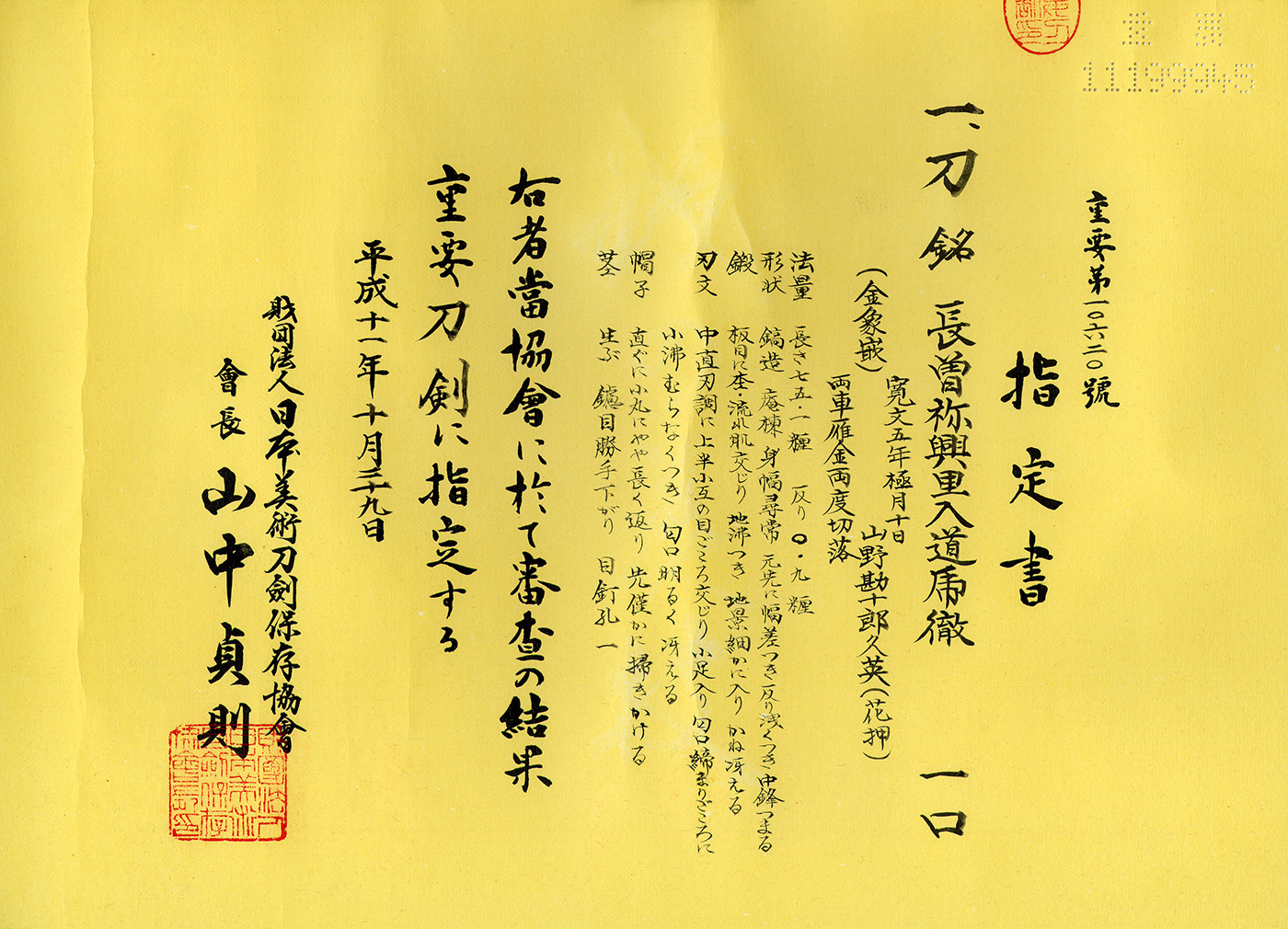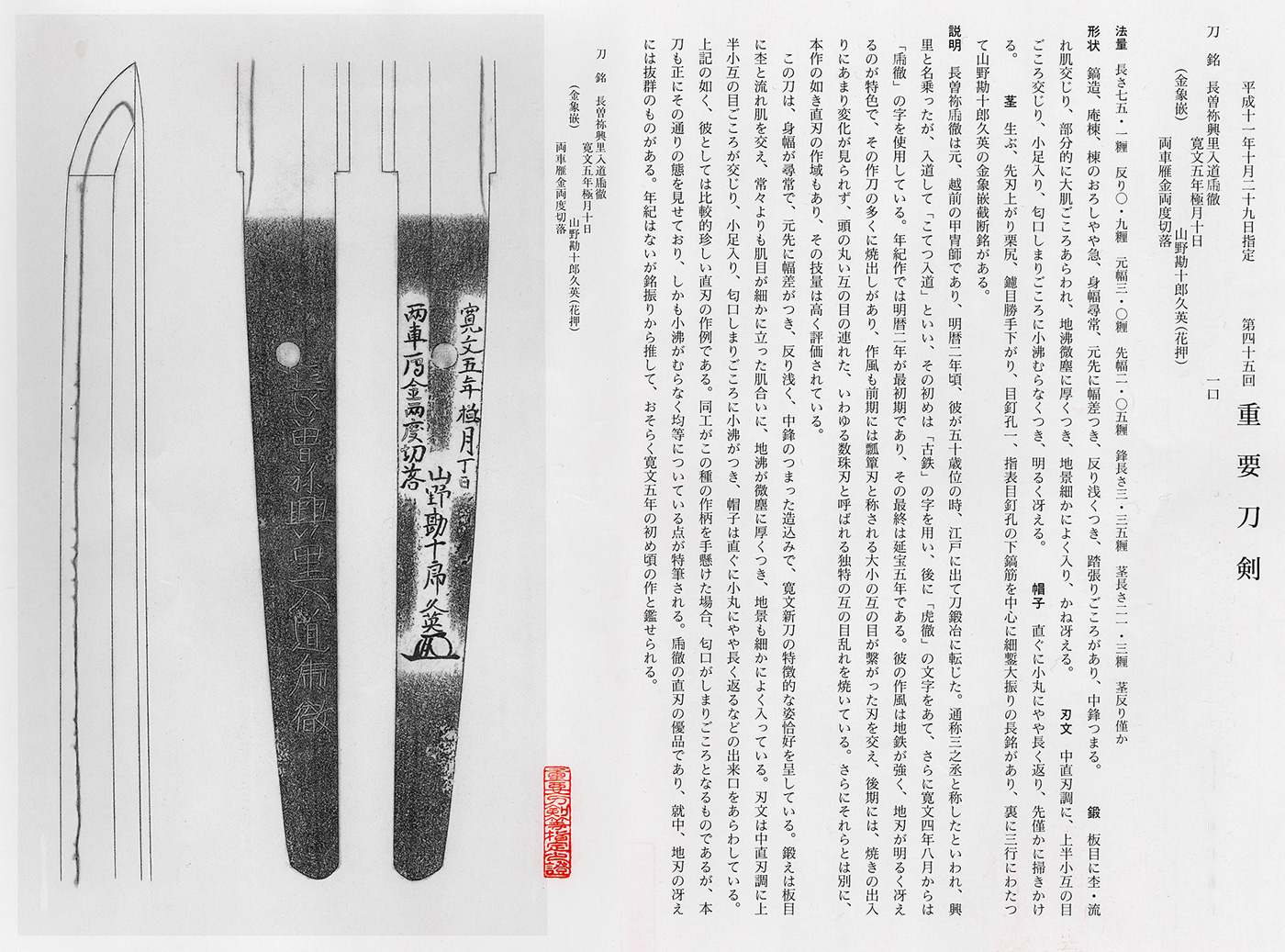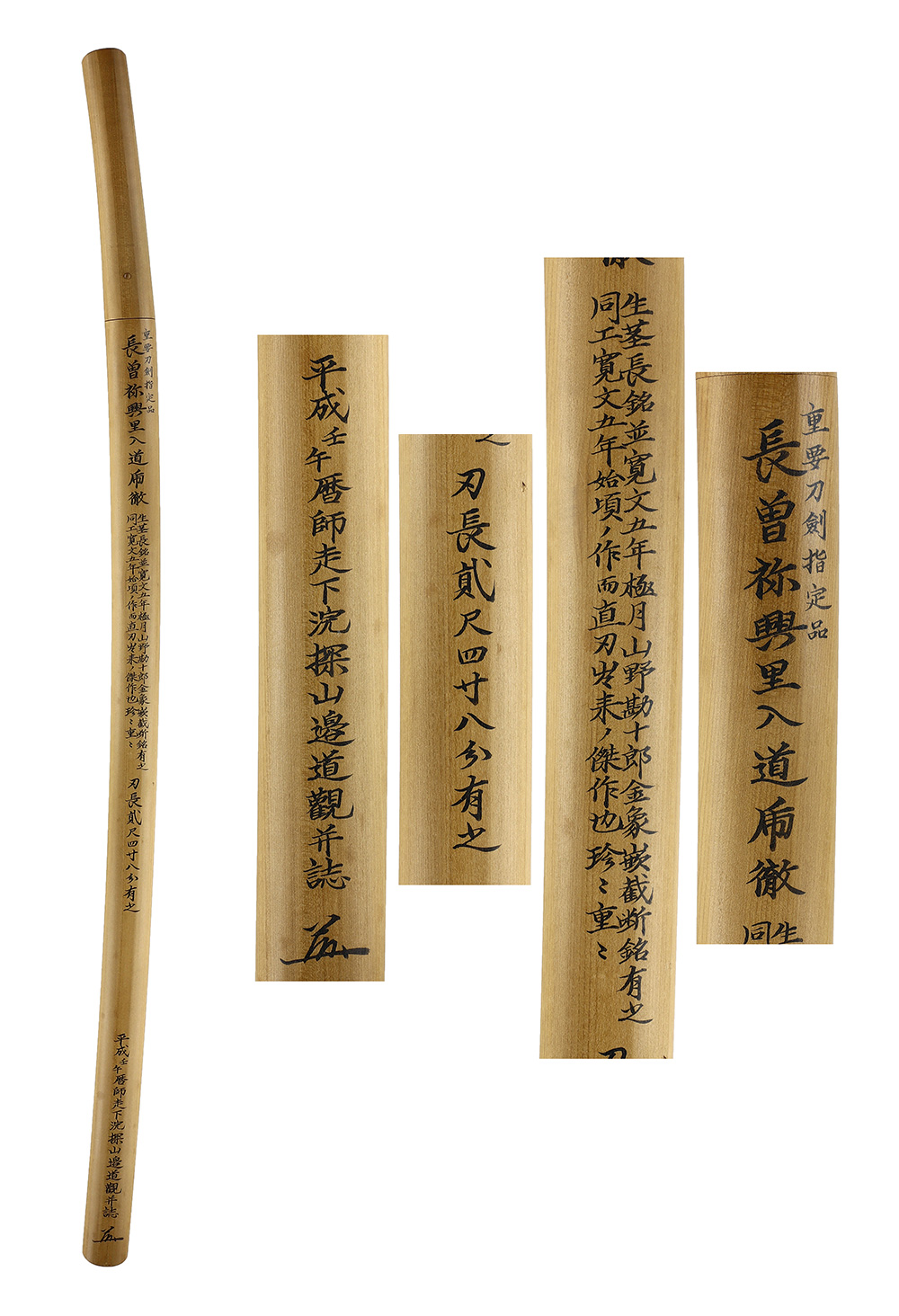Bid History
Auction has expired
Auction Expired because there were no bids|
Auction started
2025/04/19 (Sat) 10:21 |
※ = Auto
Katana: in Shirasaya (45th NBTHK Juyo Token)
Signature: Nagasone Okisato Nyudo Kotetsu 長曽祢興里入道虎徹
Golden-inscription[Saidan-mei,裁断銘]:
Kanbun 5, Gokugetsu 10 nichi (December 10,1665) 寬文五年極月十日
cut off Ryoguruma and Karigane twice 両車雁両度切落
Test cut by Yamano Kanjurō Hisahide (written seal mark) 山野勘十郎久英
We divide 4 sections for each sword as Saijyo Saku, Jyojyo Saku, Jyo Saku and Regular Saku.
This piece is ranked as Saijyo Saku among works by Kotetsu.
Habaki: Double layered golden habaki (possibly solid gold)
Blade Length: 74.9 cm (29.49 in)
Curvature: 1.1 cm (0.43 in)
Mekugi Hole: 3.19
Width at Base (Motohaba): 2.14 cm (0.84 in)
Width at Tip: 0.54 cm (0.21 in)
Thickness of rim (Kasane): 0.64 cm (0.25 in)
Sword Weight: 790 g
Era: The early Edo period, around 1665
Shape: A long katana with standard blade width, shallow curvature, tapering toward the tip, and a small kissaki. This is typical shape from the Kanbun era.
Jigane: fine Ko-itame hada with Jinie and faint Chikei.
Hamon: Konie-base, clear and bright suguha mixed with Ko-gunome with Ko-Ashi.
Features: Nagasone Kotetsu Okisato was originally active as an armor maker in Omi or Echizen, but it is said that around 1656 (Meireki 2), when he was about 50 years old, he moved to Edo and became a swordsmith.
He was renowned for the sharpness of his blades, and in the Kaiho Kenjaku, a book published in 1797 that recorded the results of test cuttings, he was ranked as a Saijo O Wazamono (top rank for cutting ability).
His swords were highly popular even at the time, and his swords were favored by high-ranking officials of the Shogunate, resulting in many counterfeits being made.
Originally signed with the kanji “虎徹” (Kotetsu), he began using the character “乕” around Kanbun 4 (1664).
The cutting test inscription on this sword dates to Kanbun 5 (1665), suggesting that the sword was likely produced around the same time.
Aoi Art’s Comment: The term “Ryoguruma or Moroguruma” (両車) in the cutting test refers to the hip area, which is said to be difficult to cut due to the pelvic bone.
“Karigane” (雁金) refers to the armpit area, which is also considered hard to cut. This cutting test inscription vividly demonstrates the sharpness of this blade.
Both the jigane and hamon are simple yet clear and vivid, giving a sharp impression as iall excess has been eliminated in pursuit of cutting performance. It is as if we get a glimpse of his aesthetic philosophy.
the 45th NBTHK Juyo Certificate
Aoi Art Estimation Paper: Whole Oshigata







Auction Expired
Auction Expired because there were no bids
Auction has expired
Auction Expired because there were no bids|
Auction started
2025/04/19 (Sat) 10:21 |
※ = Auto